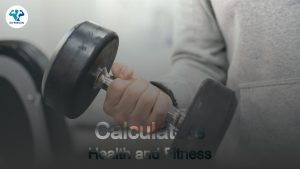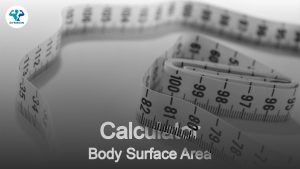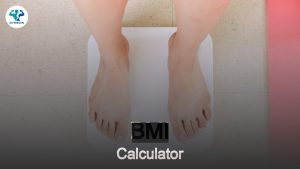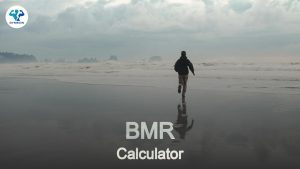When it comes to exercise, finding the right routine can feel like a maze. What works for one person might not work for another. Whether you’re just starting out or have been at it for years, knowing which exercises are effective at every stage of life is key. Let’s break it down by level and age to help you figure out what’s best for you.
Why Exercise Matters at Any Age
Exercise isn’t just about looking good. It’s about feeling good too. It keeps your heart strong, your body moving, and your mind sharp. And no matter how old you are, there’s always a way to stay active. Whether you’re a beginner, a seasoned gym-goer, or somewhere in between, this guide will help you find the best exercises for your current level and age.
Beginner Exercises (Any Age)
If you’re just getting started, you don’t need to dive into intense workouts. The key is to ease into it so you don’t burn out or get injured.
1. Walking
Why it’s effective: Walking is a low-impact exercise that almost anyone can do. It’s great for beginners because it gets you moving without putting stress on your joints.
How to do it: Start with a 15-20 minute walk each day. As you build endurance, aim for 30 minutes a day. You can even break it up into smaller walks if that’s easier for your schedule.
2. Bodyweight Squats
Why it’s effective: Squats target your legs and core, helping to build strength without needing any equipment.
How to do it: Stand with your feet shoulder-width apart. Lower your body as if you’re sitting in a chair, keeping your back straight. Go as low as feels comfortable and then push back up.
3. Wall Push-ups
Why it’s effective: This is a gentle introduction to push-ups. It works your arms, chest, and core but without the intensity of a full push-up.
How to do it: Stand a few feet from a wall. Place your hands on the wall at shoulder height and lean in, then push back to a standing position. Aim for 10-15 reps.
Intermediate Exercises (Any Age)
Once you’ve got the basics down, it’s time to step it up. Intermediate exercises add a bit more intensity and help you build on the foundation you’ve set.
1. Planks
Why it’s effective: Planks strengthen your core, shoulders, and back. They help improve posture and stability.
How to do it: Start in a push-up position, but instead of lowering yourself, hold your body in a straight line from head to heels. Try to hold it for 20-30 seconds and gradually increase over time.
2. Lunges
Why it’s effective: Lunges work your legs and glutes while improving balance.
How to do it: Step forward with one leg, lowering your hips until both knees are bent at about 90 degrees. Push back to the starting position and switch legs. Aim for 10 reps on each side.
3. Dumbbell Rows
Why it’s effective: This exercise targets your upper back and arms, helping to balance out any imbalances from sitting or slouching.
How to do it: Hold a light dumbbell in one hand, bend forward slightly at the waist, and pull the weight towards your ribcage. Lower it back down and repeat for 10-12 reps, then switch sides.
Advanced Exercises (Any Age)
For those who have been exercising consistently and are ready to challenge themselves, advanced exercises offer a way to keep progressing.
1. Deadlifts
Why it’s effective: Deadlifts are a full-body exercise that builds strength in your legs, back, and core. They’re perfect for improving functional strength.
How to do it: Stand with feet hip-width apart, holding a barbell or dumbbells. Bend at the hips and knees to lower the weights while keeping your back flat. Return to standing by pushing through your heels. Start with light weights and work your way up.
2. Pull-ups
Why it’s effective: Pull-ups are one of the best exercises for your upper body. They target your back, shoulders, and arms all at once.
How to do it: Grab a pull-up bar with an overhand grip, hands slightly wider than shoulder-width. Pull yourself up until your chin is over the bar, then lower yourself back down. If you can’t do a full pull-up yet, start with assisted pull-ups using a resistance band.
3. Burpees
Why it’s effective: Burpees are a high-intensity, full-body exercise that boosts your heart rate while strengthening your legs, arms, and core.
How to do it: Start in a standing position, then drop into a squat, kick your feet back into a push-up position, do a push-up, jump your feet back to the squat position, and jump up. Aim for 10-15 reps.
Best Exercises for Older Adults (60+)
As we age, staying active becomes even more important. It helps maintain mobility, strength, and balance. But the key is to choose exercises that are gentle on the body.
1. Chair Yoga
Why it’s effective: Chair yoga helps improve flexibility, balance, and strength without putting too much strain on your joints.
How to do it: Sit in a sturdy chair and follow a guided chair yoga routine. You can find plenty of free videos online.
2. Resistance Band Exercises
Why it’s effective: Resistance bands offer a low-impact way to build strength in your muscles without lifting heavy weights.
How to do it: Use a resistance band to perform simple exercises like bicep curls, leg lifts, and seated rows. Aim for 10-15 reps of each exercise.
3. Water Aerobics
Why it’s effective: Exercising in water takes the pressure off your joints while providing resistance that helps build strength.
How to do it: Join a local water aerobics class or do your own routine in a pool. Start with 30 minutes of gentle movements like walking or leg lifts in the water.
Tailoring Exercises for Every Age Group
For Kids (Ages 5-12)
Kids need to stay active, but the focus should be on fun rather than structure. Playing games like tag, soccer, or dancing are all excellent ways for kids to exercise without even realizing they’re working out.
For Teens (Ages 13-19)
At this age, it’s important to develop a well-rounded fitness routine that includes strength, cardio, and flexibility exercises. Teens might enjoy sports, running, or even weightlifting (with proper guidance).
For Adults (Ages 20-40)
For this age group, the goal is to maintain fitness, build muscle, and manage stress. High-intensity interval training (HIIT), weightlifting, and yoga are all great choices for balancing strength, cardio, and flexibility.
For Middle Age (Ages 40-60)
At this stage, strength and flexibility become increasingly important. Pilates, resistance training, and brisk walking can help keep bones strong and prevent muscle loss.
For Seniors (60+)
As we’ve already mentioned, low-impact exercises that focus on mobility and balance are key. Chair yoga, swimming, and light resistance exercises can help older adults stay strong and independent.
How to Stay Motivated
We all know how easy it is to start a workout routine and then… well, stop. Staying motivated can be tough, but the key is to make exercise fun and achievable.
1. Set Small Goals
Instead of aiming to run a marathon, start with a goal to walk three times a week. Small wins will keep you motivated.
2. Mix It Up
Don’t get stuck in a workout rut. Try new exercises, join a class, or work out with a friend. Keeping things fresh will help you stay interested.
3. Track Your Progress
Seeing progress, whether it’s more reps or less time needed for a workout, can be incredibly motivating. Use a fitness tracker or app to keep track of your improvements.
FAQs
1. How often should I exercise?
For most people, aiming for at least 30 minutes of moderate activity five times a week is a good goal. You can break this up into shorter sessions if needed.
2. Is it too late to start exercising?
It’s never too late! No matter your age, you can always improve your fitness level. Start with something gentle and build from there.
3. What if I have an injury?
Always check with your doctor or physical therapist before starting a new workout routine if you have an injury. They can guide you on exercises that are safe and effective.
4. Do I need a gym membership?
Nope! You can do many effective exercises at home with minimal or no equipment. Walking, bodyweight exercises, and even resistance bands are all great options.
5. What’s the best exercise for weight loss?
The best exercise for weight loss is the one you’ll stick with. Cardio activities like running, cycling, and swimming can help burn calories, but strength training is also important for building muscle, which burns more calories at rest.
No matter your age or fitness level, there’s an exercise routine that’s perfect for you. Start small, stay consistent, and most importantly, enjoy the process!





